
Caenoplana coerulea, known as the blue planarian or blue garden flatworm is a species of land planarian.

Geoplaninae is a subfamily of land planarians endemic to the Neotropical region. Members of this family are sometimes referred to as the Neotropical land planarians. However, one species, Obama nungara has been introduced in Europe.
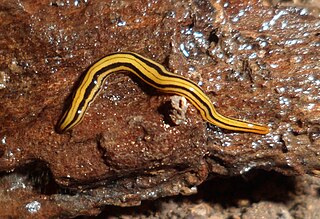
Luteostriata is a genus of land planarians from Brazil characterized by a yellow body with dark longitudinal stripes.

Obama is a genus of land planarians from South America. It contains several species adapted to human-disturbed environments, including the only invasive land planarian native to the Neotropical realm, Obama nungara, which has been accidentally introduced in Europe.
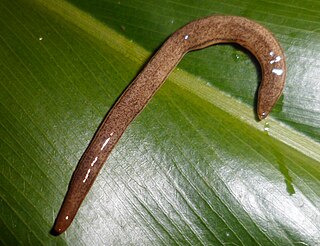
Supramontana is a genus of land planarians from South America.

Imbira is a genus of land planarians found in South America.

Pasipha is a genus of land planarians from South America.
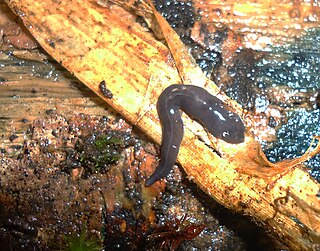
Notogynaphallia is a genus of land planarians from South America.

Luteostriata abundans is a species of Brazilian land planarian in the subfamily Geoplaninae. It is a common species in human-disturbed areas in Brazil's southernmost state, Rio Grande do Sul.

Obama anthropophila is a species of Brazilian land planarian in the subfamily Geoplaninae. It is a very common land planarian in human-disturbed environments in southern and southeastern Brazil.

Obama josefi is a species of Brazilian land planarian in the subfamily Geoplaninae.

Obama nungara is a species of land planarian in the family Geoplanidae. It is native to South America, but has been introduced in Europe.
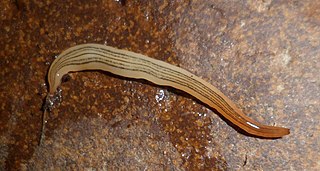
Luteostriata ceciliae is a species of Brazilian land planarian in the subfamily Geoplaninae.

Cratera viridimaculata is a species of land planarian found in Argentina.

Notogynaphallia nawei is a species of land planarian from Argentina.
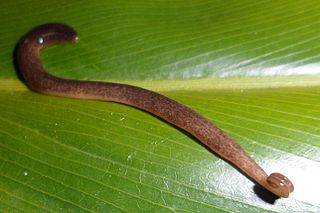
Choeradoplana iheringi is a species of land planarian in the subfamily Geoplaninae found in Brazil.
Gigantea urubambensis is a species of land planarian belonging to the subfamily Geoplaninae. It is known from specimens collected in rainforests of the Lower Urubamba River valley in Peru.
Choeradoplana crassiphalla is a species of land planarian belonging to the subfamily Geoplaninae. It is known from specimens found in the Reserva de Vida Silvestre Urugua-í within the Urugua-í Provincial Park in Argentina.

Geoplanini is a tribe of land planarians in the subfamily Geoplaninae.
Luteostriata subtilis is a species of land planarian belonging to the subfamily Geoplaninae. It is known from specimens found in Brazil.
















